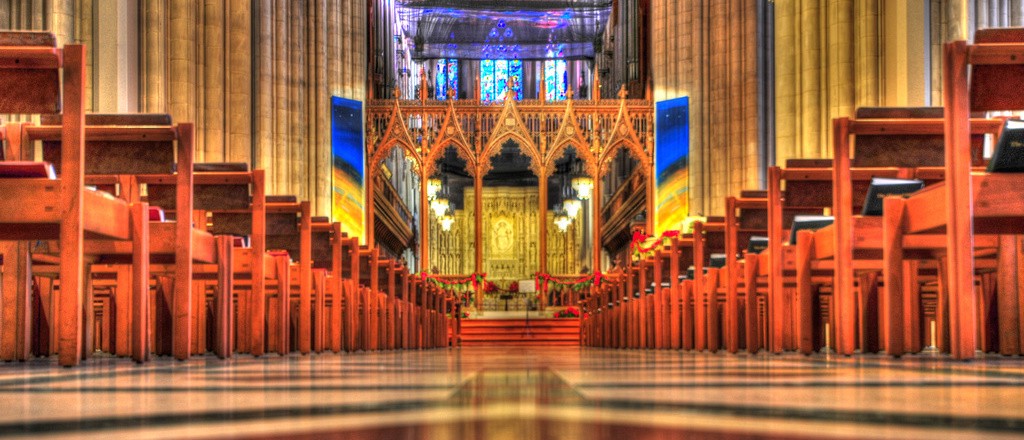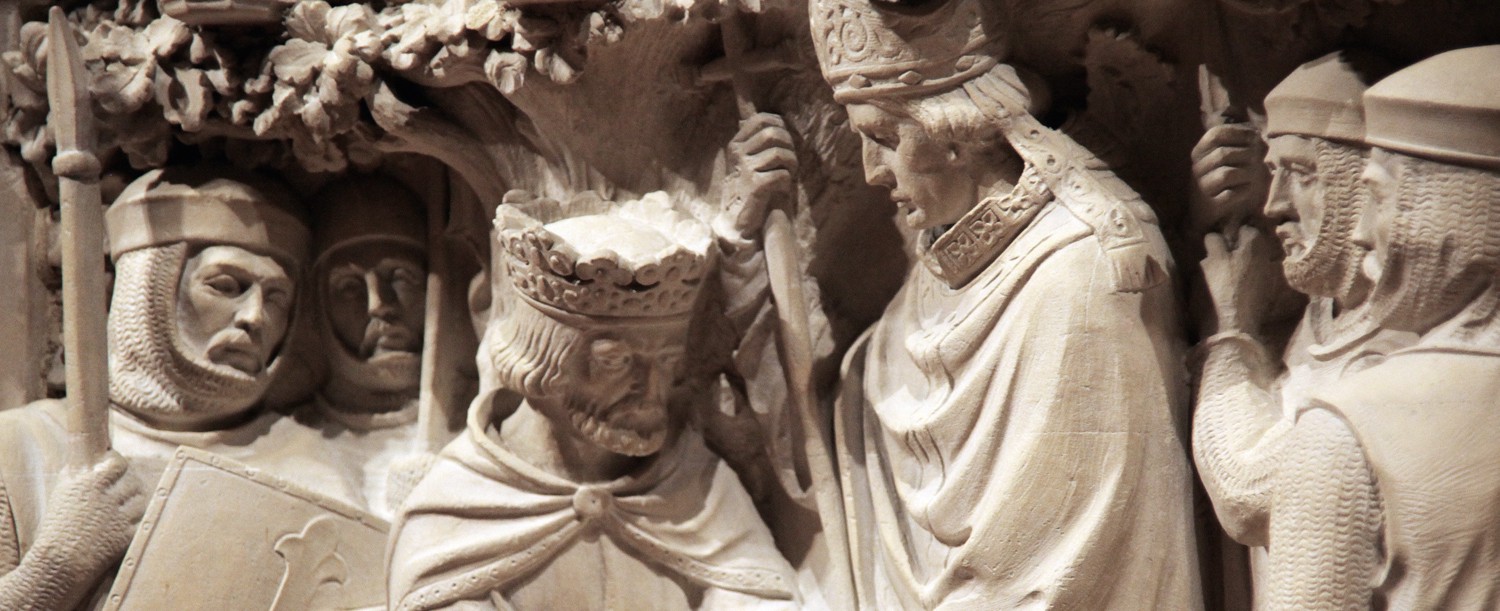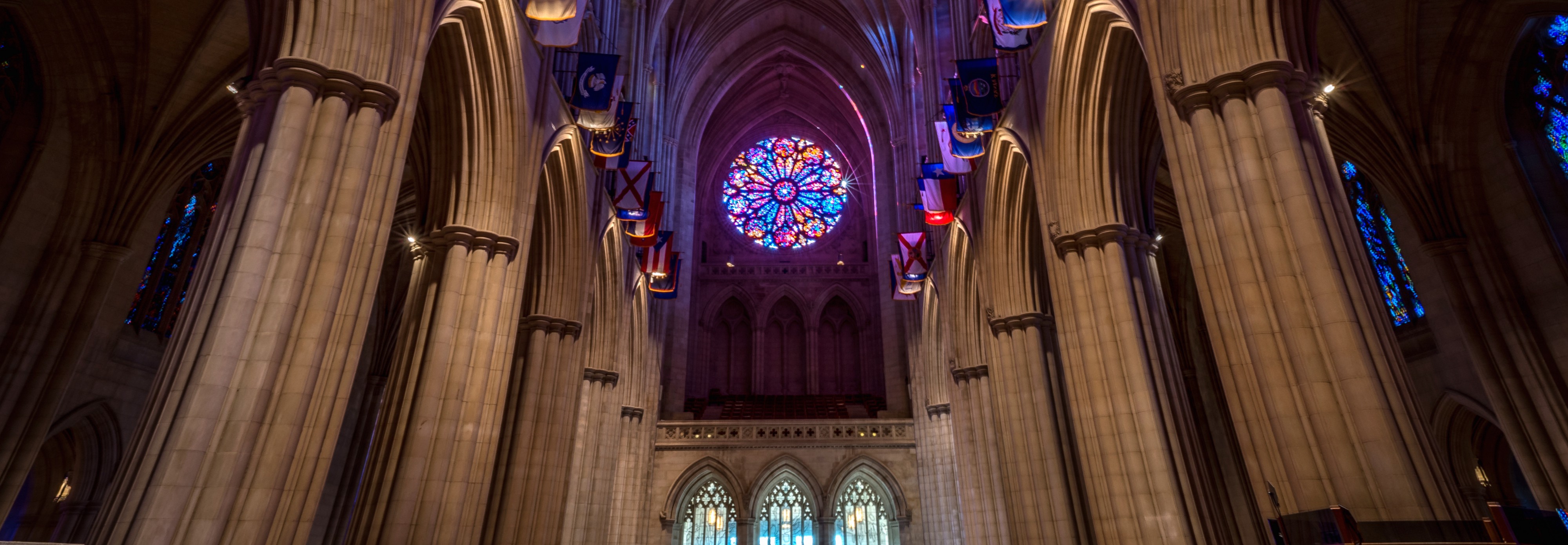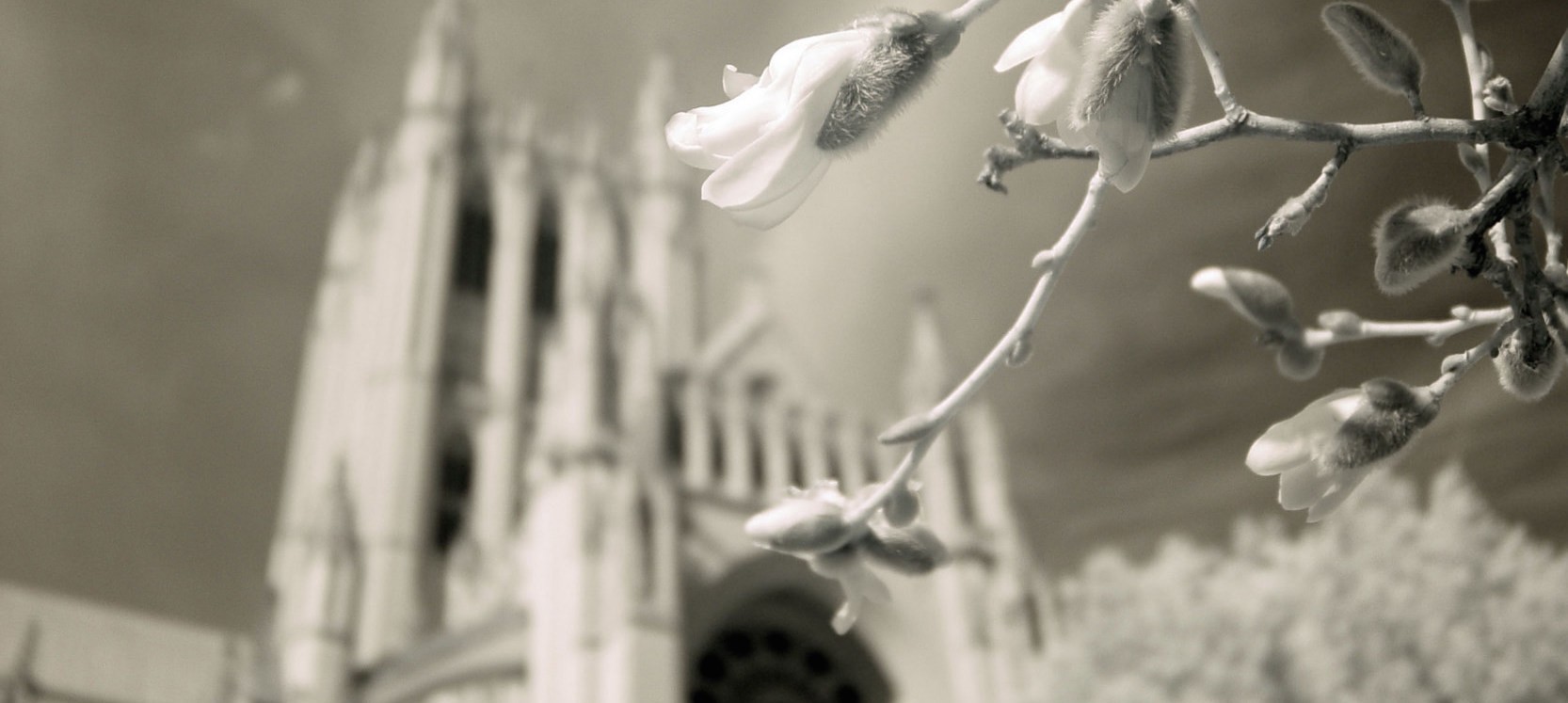Injust three weeks, Pope Francis will touch down at Andrews Air Force Base in Washington, the first stop on a tour of the East Coast of the United States. While in the capital, the pope will address a joint session of Congress where he is expected to speak about climate change. From this summer’s encyclical to this week’s day of prayer for the environment, Francis is leading the charge for climate action.
In preparation for the pope’s visit, the Washington National Cathedral, the second-largest cathedral in the United States, is taking significant steps to reduce its carbon footprint. Through energy efficiency upgrades, the cathedral will cut its power consumption by nearly 200,000 kWh a year. While the National Cathedral is part of the Episcopal Church and not the Catholic Church, the institution’s leaders are committed to joining the pope’s effort to slow climate change. Rev. Canon Jan Naylor Cope, Provost of the National Cathedral, said, “Pope Francis and others are helping to tell a story that needs to be told. In taking these small steps, we hope that we are helping to spread that word.”

The National Cathedral is shrinking its carbon footprint by 145 tons of CO2 per year.
The cathedral’s efficiency upgrades will cut the building’s carbon footprint by a whopping 145 tons of CO2 per year. By and large, the savings come from new lighting that uses less energy. The cathedral has replaced roughly 1500 incandescentlightbulbs with power-thrifty LEDs. In addition, said Kevin Eckstrom, Chief Communications Officer at the National Cathedral, “In Bratenahl House, which is the house where the dean of the cathedral lives, they’ve installed geothermal systems.” These systems will help heat and cool the residence. Noted Eckstrom , “We actually use that house for a lot of events, for receptions, so it’s not just where somebody lives, but it’s a key part of this cathedral’s life.”

Cutting carbon serves the cathedral’s larger goals.
Rev. Cope sees the cathedral’s efforts to reduce climate-distorting carbon pollution as part of its broader mission to serve the community. Cutting carbon, said the reverend, stands on par “with the other things that we do to reach out to people in need, whether it’s feeding the hungry, clothing the naked, visiting the prisoners.” She continued, “We are intended to be good stewards of the Earth, our fragile island home.”
Cope’s congregants appear to share her view. “The cathedral actually has a green working group of parishioners and worshipers,” said Eckstrom. “They’re constantly looking at ways that the cathedral and its congregation can take tangible steps to help the environment. This is a very grassroots effort within the cathedral.”

Smaller energy bills mean the cathedral can do more charitable work.
Thanks to the cost savings of conserving energy, the cathedral’s efficiency upgrades will pay themselves in just four months. After an initial investment of $10,000, the cathedral will save more than $30,000 on electricity bills in the first year alone. That means that money that once paid for dirty energy from coal-fired power plants can now be redirected to a local soup kitchen or to community outreach. Said Eckstrom, “Every dollar that we save on energy is a dollar that we can spend on charitable causes.”
Energy savings can also be used to restore one of Washington’s most visible landmarks. The National Cathedral was badly harmed in the 2011 earthquake, which inflicted roughly $30 million in damages. It’s been a slow recovery for the cathedral, still bruised from the tremor. The building has $22 million left in unfinished repairs.

Other churches are also finding ways to use less energy.
“Part of the challenge and the opportunity of being the National Cathedral is that we’re a role model for other institutions. People look to us for ideas of things that they can do, but we also look to other churches,” said Eckstrom. “And there are churches across the city and across the nation doing really interesting things.”
The DC Sustainable Energy Utility, which worked with the National Cathedral on its energy efficiency upgrades, has spearheaded more than 120 projects for 85 religious institutions in the District of Columbia. In total, these efforts have yielded energy savings of more than 4 million kWh. Though, as Rev. Cope noted, using less energy is about more than shrinking the church’s electric bill.
Energy efficiency, said Rev. Cope, is about “reducing our carbon footprint and the effects that has more broadly.” She added, “Our neighbors are not just the people who live on Cathedral Avenue or Wisconsin Ave. We are inescapably interconnected as a global community. And stewardship of the Earth means just that, that people all across this beautiful world of ours are our neighbors, and we have a responsibility to one another.”
Jeremy Deaton writes for Nexus Media, a syndicated news service covering climate, energy, policy, art and culture. You can follow him @deaton_jeremy.

